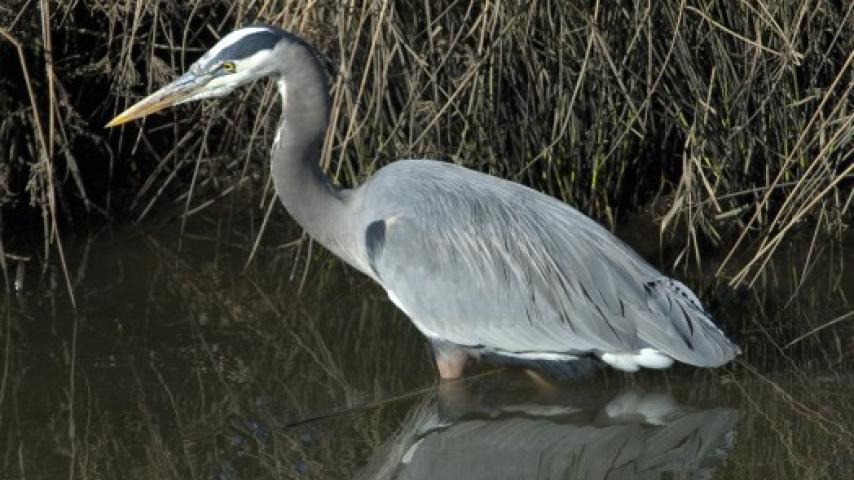Great Blue Heron (Ardea herodias)
These large birds are easily recognizable by their long neck and legs and overall gray-blue coloration. With further scrutiny, you can see that they are really handsomely patterned, with black plumes on a white head, bold black patches on the underparts, and even swatches of rufous on the wings and thighs.

KINGDOM Animalia - PHYLUM Chordata - CLASS Aves - ORDER Ardeiformes - FAMILY Ardeidae
The flight feathers are conspicuously darker than the rest of the wing. Great Blue Herons take off with neck extended, but then pull it into a graceful S shape as they fly.
The long legs allow this bird to wade or stand in shallow water while looking for prey. The neck is drawn back in a curve, and the bird stares intently in front of it. If a small fish is seen, it may move forward ever so slowly, until it is positioned right, then a lightning-fast strike with extended neck may reach the intended target. Most prey is captured between the mandibles, but larger fish may be speared. Most of the prey species are fish, up to a good 30 cm in length, but these large predators also take amphibians, snakes, and baby birds in wetlands. Especially during winter, they spend much time in upland habitats hunting voles.
Herons breed colonially, usually building their large twig nests well up in trees. Colonies can have 100 or more pairs, but most are smaller. Courtship behavior is spectacular, one or both birds with neck extended, head and bill held upward, and wings somewhat drooped. All the long, filmy plumes on the breast are spread, and the reddish patches are exposed. one bird may fly in circles around the colony with neck outstretched, then land at nest with a series of croaks. Mating takes place on the nest, built by the female with sticks brought by the male.
The female lays about four eggs, and both sexes incubate them for almost a month. It takes the eggs about three days to hatch, and then the young grow rapidly while fed by both parents. They leave the nest at about 7-8 weeks but return to it to be fed for another few weeks. They mature rapidly for a large bird, usually breeding when two years old. The oldest bird on record lived 23 years.